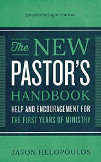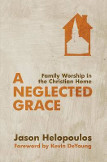
Dangers of Non-Christocentric Preaching: Misapplied Sermons
Understanding the biblical text in light of the person and work of Christ and eschatological fulfillment in him does not simply provide an additional meaning and application of the text to be added to a non-Christocentric reading. A non-Christocentric approach often yields a fundamentally different understanding and application of the text than a Christocentric, kingdom-focused reading.
For instance, in the David and Goliath narrative, a typical sermonic approach uses David as an exemplar of courage and exhorts the congregation to defeat the giants in their life through faith. One popular preacher and author offers a typical approach,
"Your Goliath doesn’t carry a sword or a shield; he brandishes blades of unemployment, abandonment, sexual abuse, or depression. Your giant doesn’t parade up and down the hills of Elah; he princes through your office, your bedroom, your classroom. He brings bills you can’t pay, people you can’t please, whiskey you can’t resist, pornography you can’t refuse, a career you can’t escape, a past you can’t shake, a future you can’t face. You know well the roar of Goliath. ...Rush your giant with a God-saturated soul."
Whereas, a Christocentric reading identifies the congregation with the cowering Israelites: they cannot meet the challenge of the enemy; they should be “dismayed and greatly afraid.” Their only hope is a champion, a substitute, a mediator, who can meet the challenge of God’s enemy (1 Sam 17:11).
David’s role in the narrative is typical of Christ. John Woodhouse explains,
"As we have come to our fourth and final installment of the great story of David and Goliath, we come at last to the moment of victory. The story has been told at great length, mainly so we will appreciate the wonder of the victory we are to witness now. As David defeated that terrible enemy of God’s people, we need to understand that God was doing (admittedly on a smaller scale and with more limited ramifications) what he has now done in Jesus’ victory.”
David enters the scene as the unlikely shepherd boy from Bethlehem who becomes the Spirit-anointed king of Israel (1 Sam 16:1-13). He is not simply a courageous boy but God’s chosen mediator who displays God’s power in weakness. The narrative mentions the anointed one’s crushing the head of God’s enemy five times in 1 Samuel 17, recalling the initial gospel promise in Genesis 3 and anticipating the antitype in Revelation 12 (Gen 3:15; 1 Sam 17:46, 49, 51, 54, 57; Rom 16:20; Rev 12:9-11).
Sidney Greidanus notes,
"The essence of this story, therefore, is more than Israel’s king defeating the enemy; the essence is that the Lord himself defeats the enemy of his people. This theme locates this passage on the highway of God’s kingdom history which leads straight to Jesus’ victory over Satan. The history of enmity began right after the fall into sin when God said to the serpent (later identified as Satan): ‘I will put enmity between you and the woman, and between your offspring and hers; he will strike your head, and you will strike his heel’ (Gen 3:15). Thus the battle between David and Goliath is more than a personal scrap; it is more than Israel’s king defeating a powerful enemy; it is a small chapter in the battle between the seed of the woman and the seed of the serpent—a battle which reaches its climax in Jesus’ victory over Satan, first with his death and resurrection, and finally at his Second Coming when Satan will be thrown ‘into the lake of fire and sulfur’ (Rev 20:10)." [ Preaching Christ from the Old Testament (Grand Rapids: Eerdmans, 1999), 239].
The application of the passage is not to have the courage of David but to trust in the Lord’s anointed, who defeats the enemy of God on your behalf. Only in his victory can one plunder the enemy to the glory of God, receiving the fruit of his work (1 Sam 17:51-53; Matt 12:29; Luke 1:31-33, 11:15-19). The Christocentric and non-Christocentric interpretations of the text produce fundamentally different meanings and distinct applications.
Moreover, it may be immoral to emulate the behavior of biblical characters in certain narratives. These kinds of texts should lead the exegete to conclude that the point of the passage is something other than a behavioral imperative. Edmund Clowney provides an excellent example of such a narrative:
The real problem comes, however, when Bible characters seem to be commended for doing dreadful things. Saul disobeys the Lord by not utterly destroying the Amalekites when the day of God’s judgment against them comes (1 Samuel 15). Saul claims to have been perfectly obedient, and Samuel asks, “What about the bleating of the sheep and lowing of the cattle that I hear?” When Samuel learns that Saul has spared King Agag, he demands that the prisoner be brought in, and does to the king what Saul had failed to do. He hews him to pieces before the Lord. Samuel’s action, and its approval in the narrative, remains baffling on a moralistic level. To understand we must take account of the history of redemption. Samuel’s bringing down of the divine curse must be understood in the context of the Lord’s conquering the enemies of his kingdom. [Preaching and Biblical Theology (Phillipsburg, NJ: P&R, 1961), 79-82].
For another example, in the book of Judges, one wonders what a left-handed assassin (Judg 3:12-30) and a head crushing wife who is grotesquely handy with a tent peg and a hammer (Judg 4:17-22) have to do with the gospel of Jesus Christ? This is a dilemma with which every person preaching, teaching, or studying the book of Judges has to grapple. But when one considers the book as part of the fabric of the grand narrative of redemptive history, then its dramatic, suspense-filled stories of sin, salvation, and violent warfare do not seem as foreign to us as followers of Jesus.
Since the first promise of the gospel was that of a messianic seed who would be born of woman, engage in mortal combat with the serpent, and ultimately crush his head (Gen 3:15), it is apropos that the motif of “death by head wound” marches through the book and the whole Old Testament, from Sisera and Abimelech to Goliath and Absalom. Jael’s driving of a tent peg through Sisera’s temple is described as the means God used to subdue the enemy (Judg 4:23) and leads to a song of praise in the next chapter (Judg 5:24-31).
This first gospel promise echoes throughout redemptive history, as seeds born of women crush the heads of the enemies of God (John 8:44). There are various saviors in the Bible who serve as types of the promised skull-crushing Savior, and Judges is no different. The Holy Spirit records that, although these warrior-saviors were often flawed in action, they were not so flawed in faith (Heb 11:32-35).
Applying one’s life to the truth of a biblical text can never bypass Jesus Christ and his gospel of the the Kingdom. Non-Christocentric sermons inevitably encourage the Bible to be misapplied. Our goal must be to seek to know how, through Christ, we can walk in line with the gospel and render the obedience of faith. No obedience apart from faith is true obedience. Walking in line with the truth of the gospel is always the obedience of faith (Rom 1:5, 16:26). What every person needs from the Scripture, believer and unbeliever, is the gospel. We cannot claim any of the promises of God apart from Christ and his Gospel because there are no promises of God apart from Christ. Paul tells us, “all the promises of God find their Yes in him” (2 Cor 1:20).
*This is the third post in a series on the dangers of non-Christocentric preaching. You can find the first installement in the series here, and the second, here.
Christward Collective is a conversation of the Alliance of Confessing Evangelicals. It is supported only by its readers and gracious Christians like you. Please prayerfully consider supporting Christward Collective and the mission of the Alliance.



















 © Alliance of Confessing Evangelicals
© Alliance of Confessing Evangelicals


